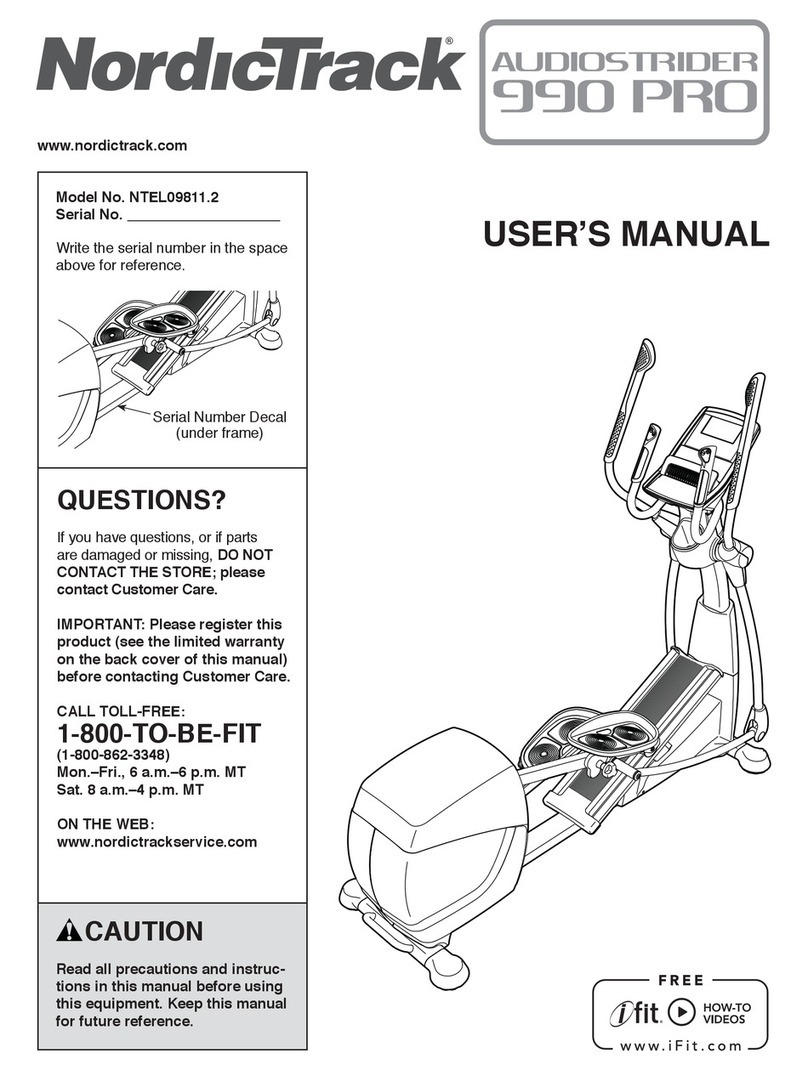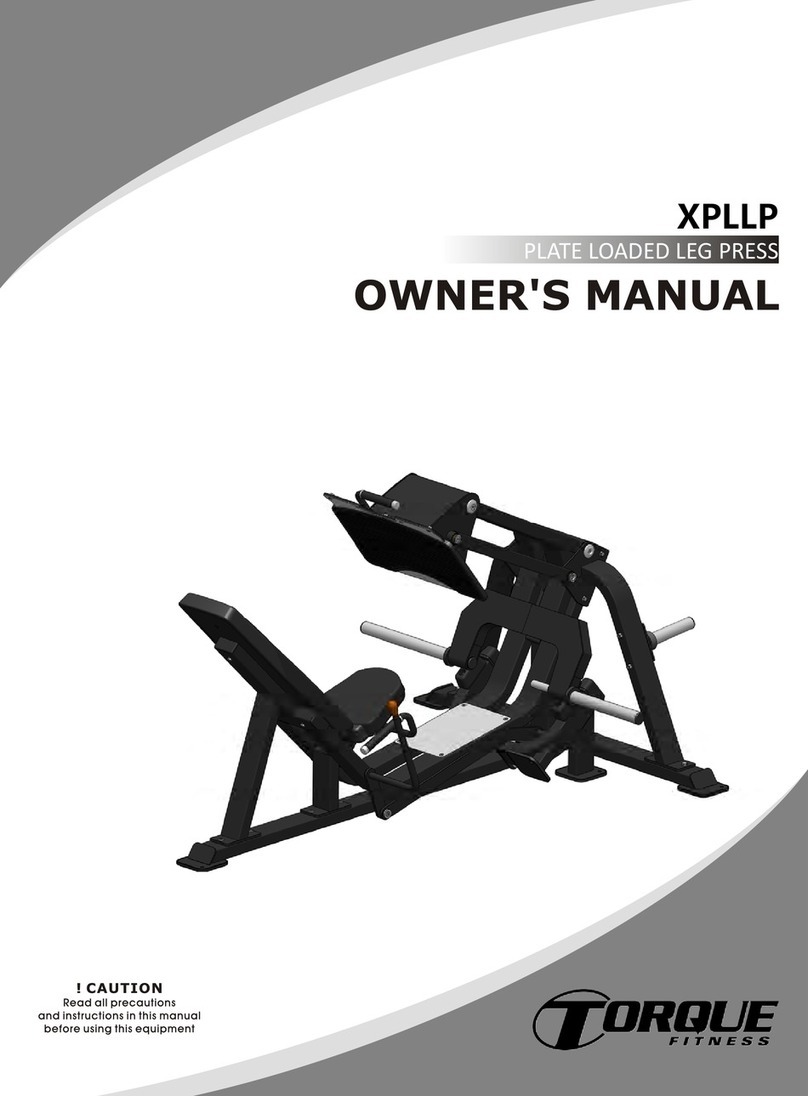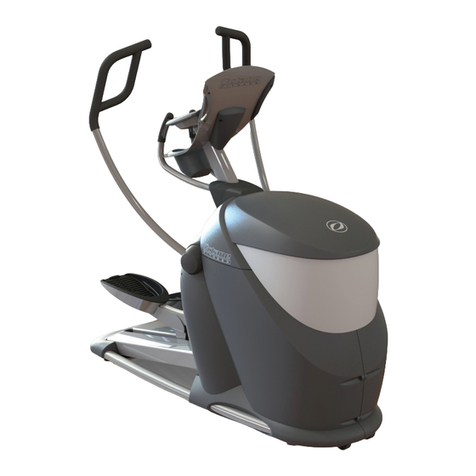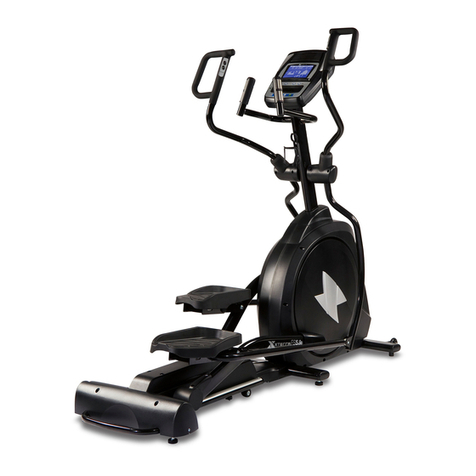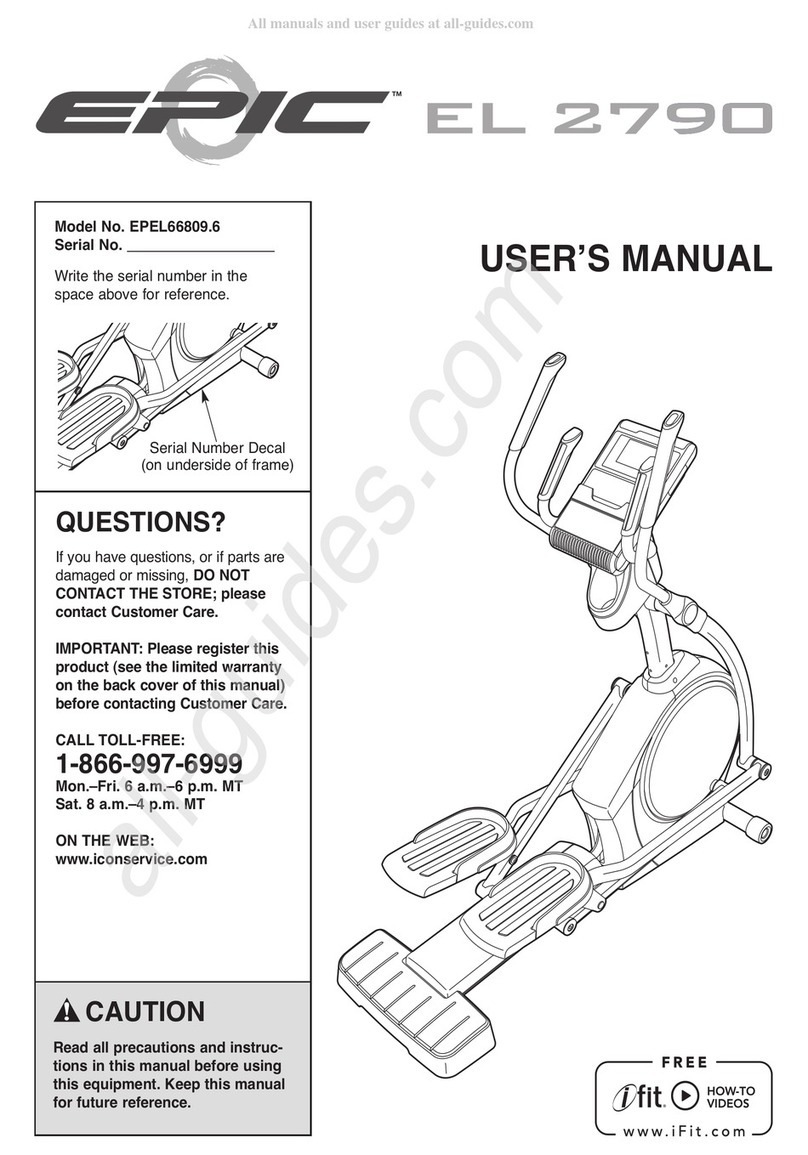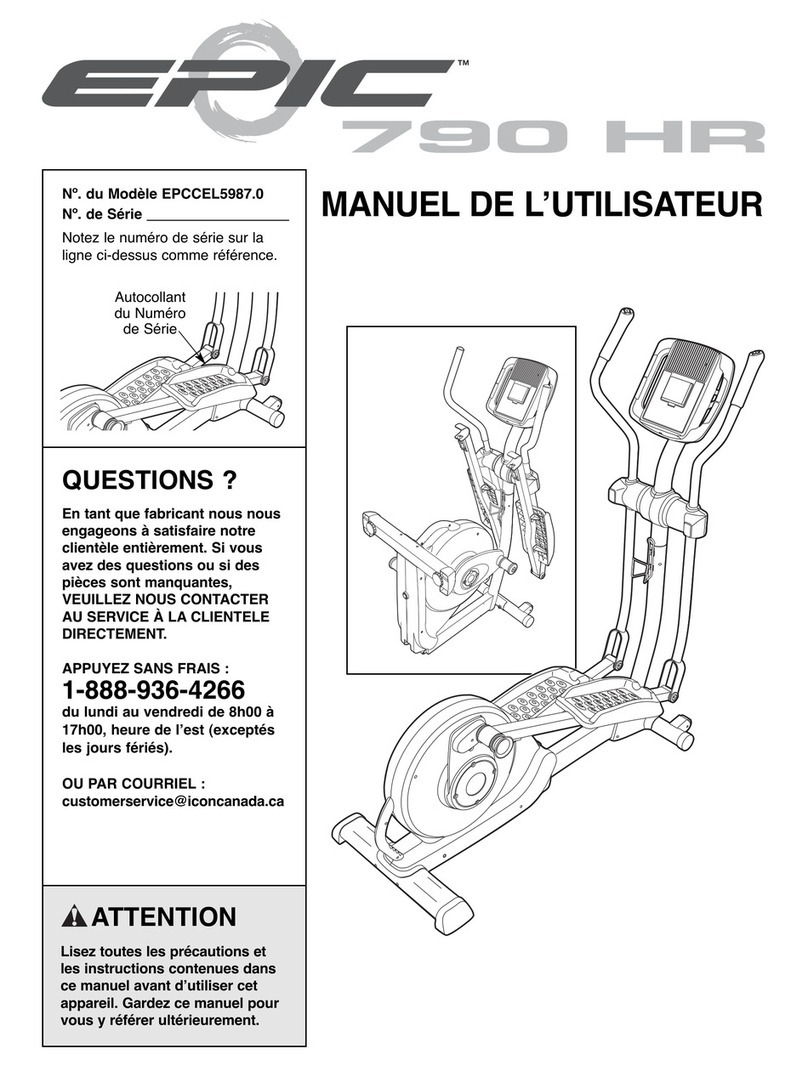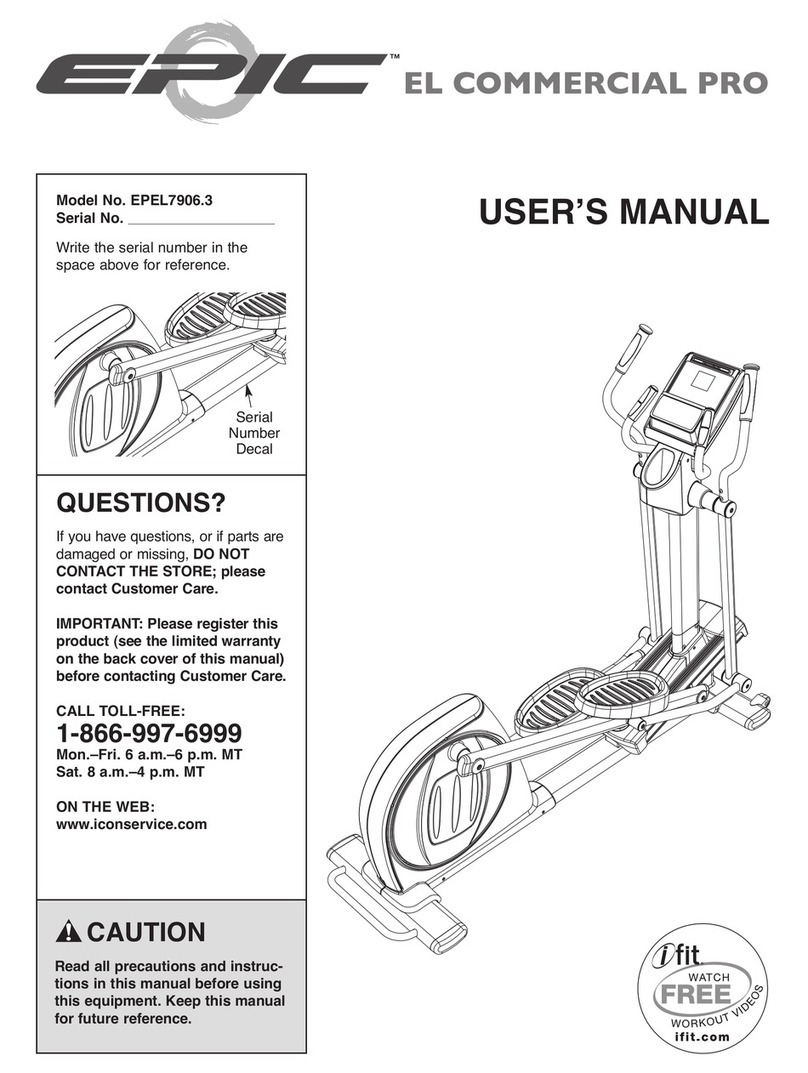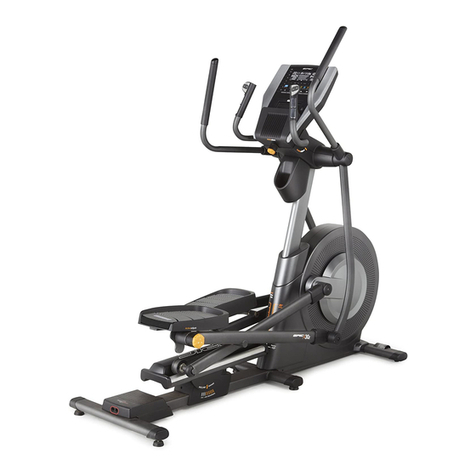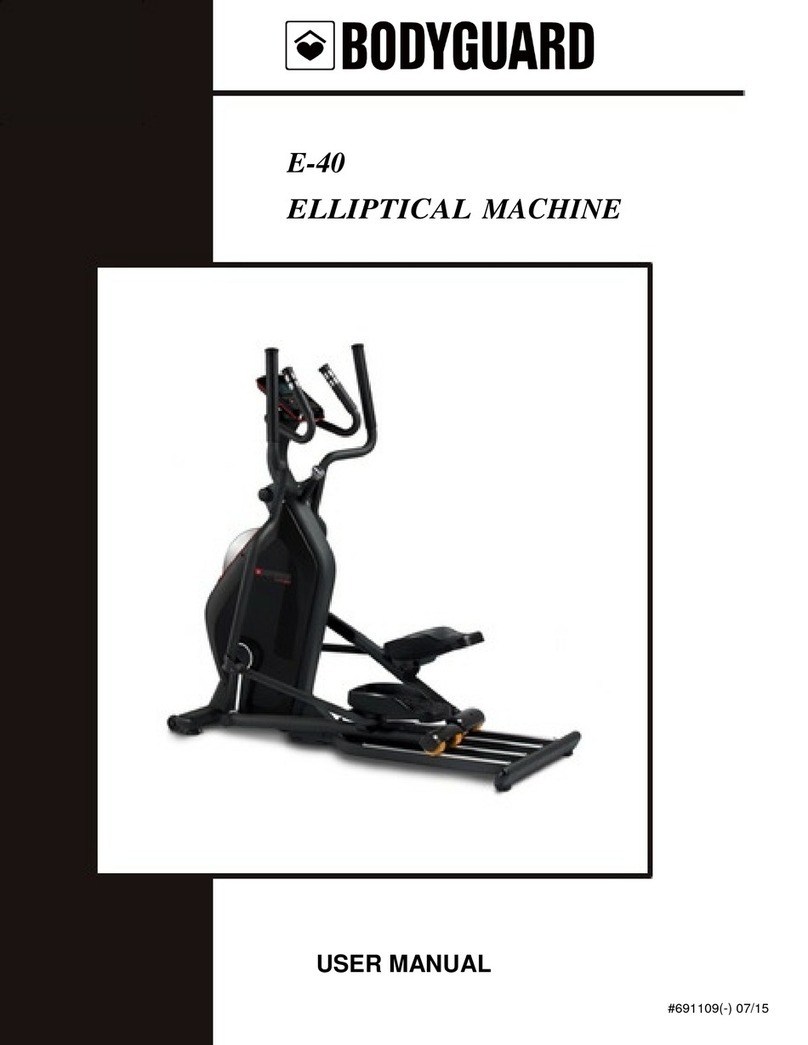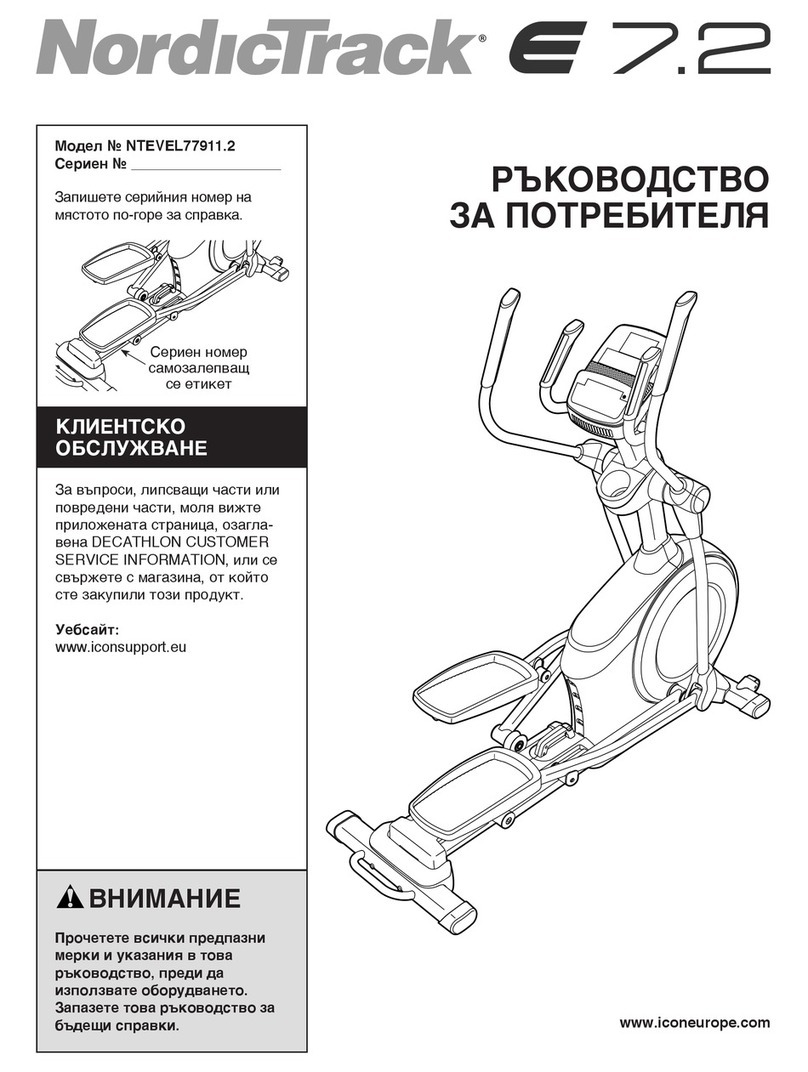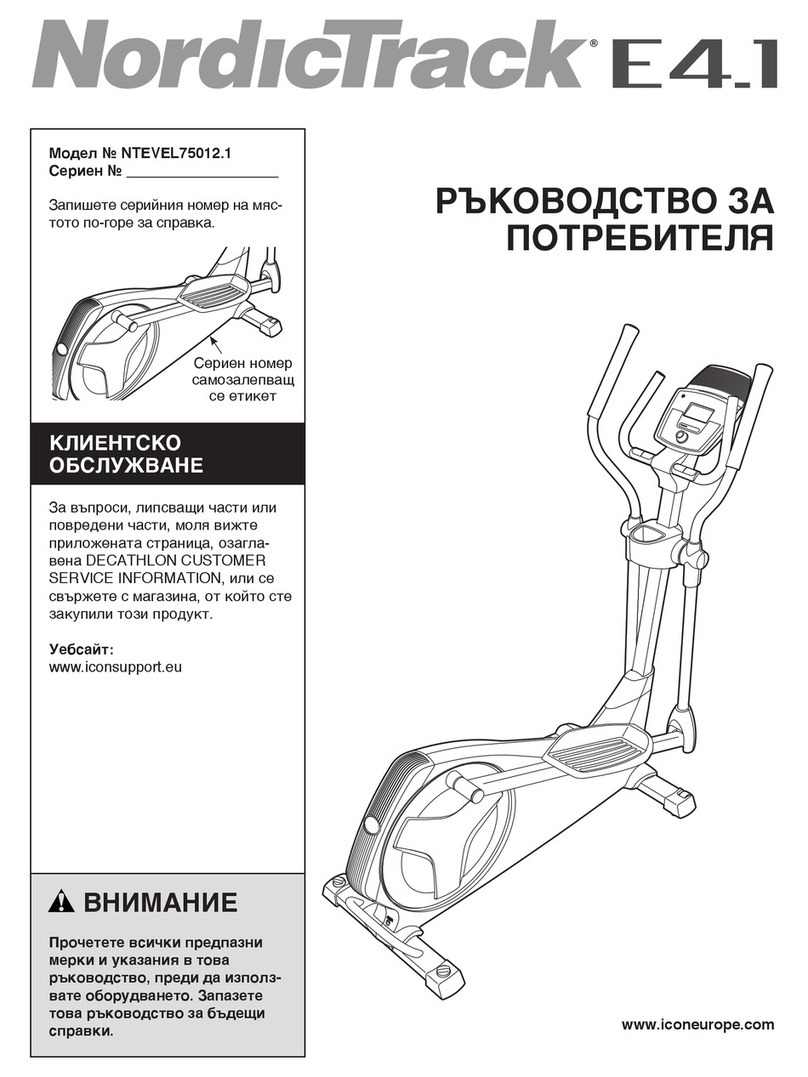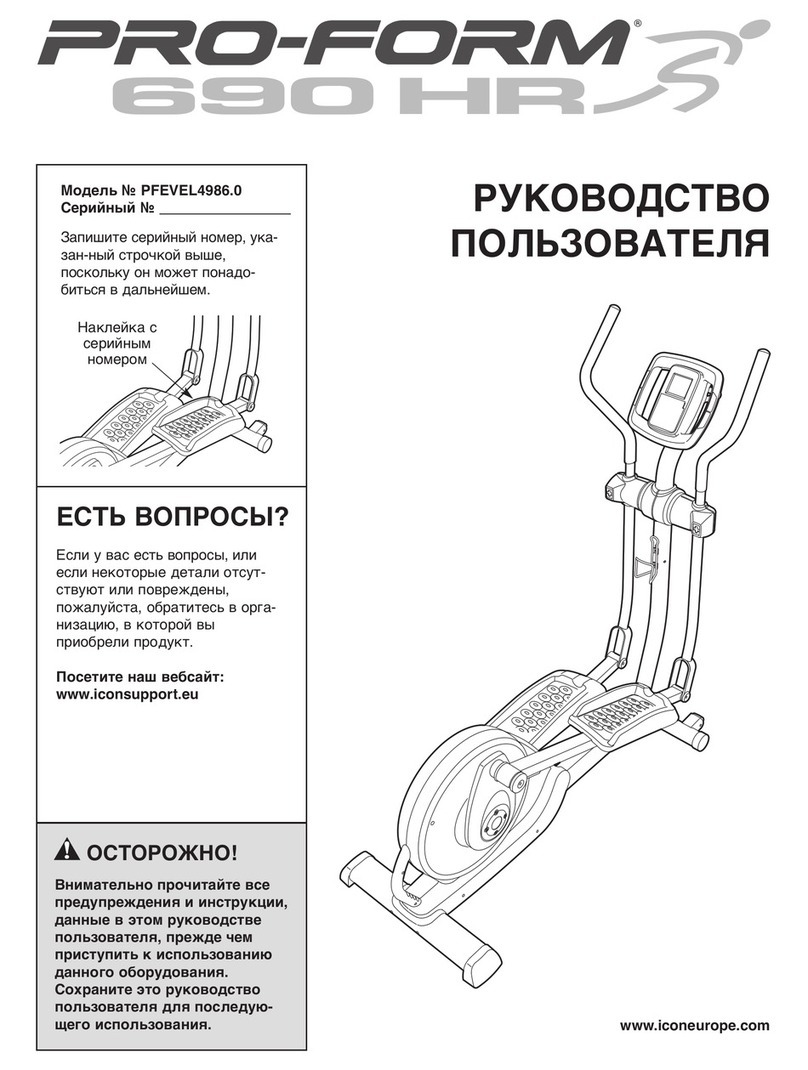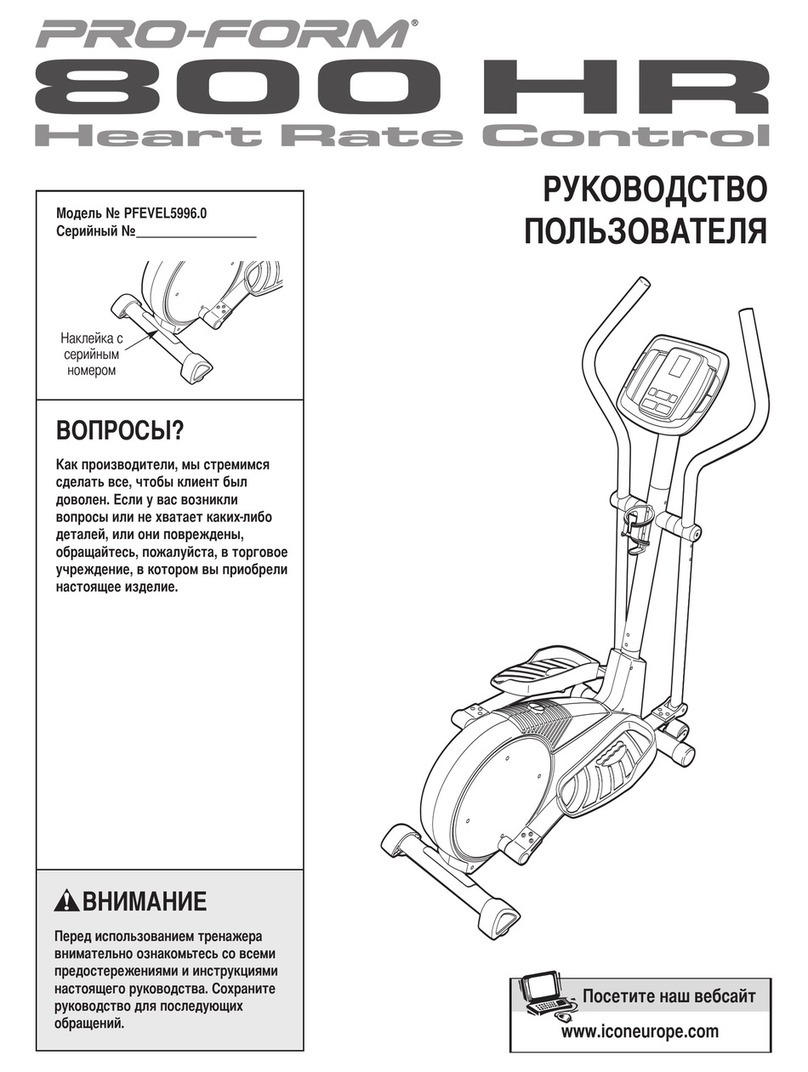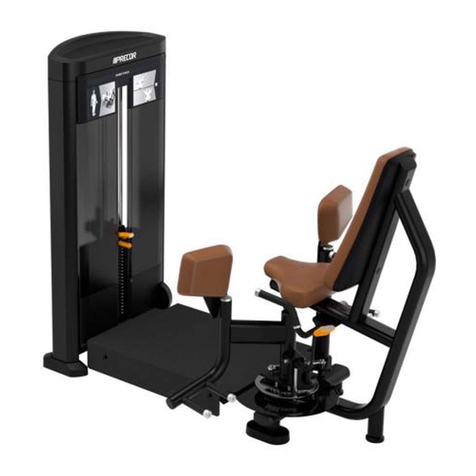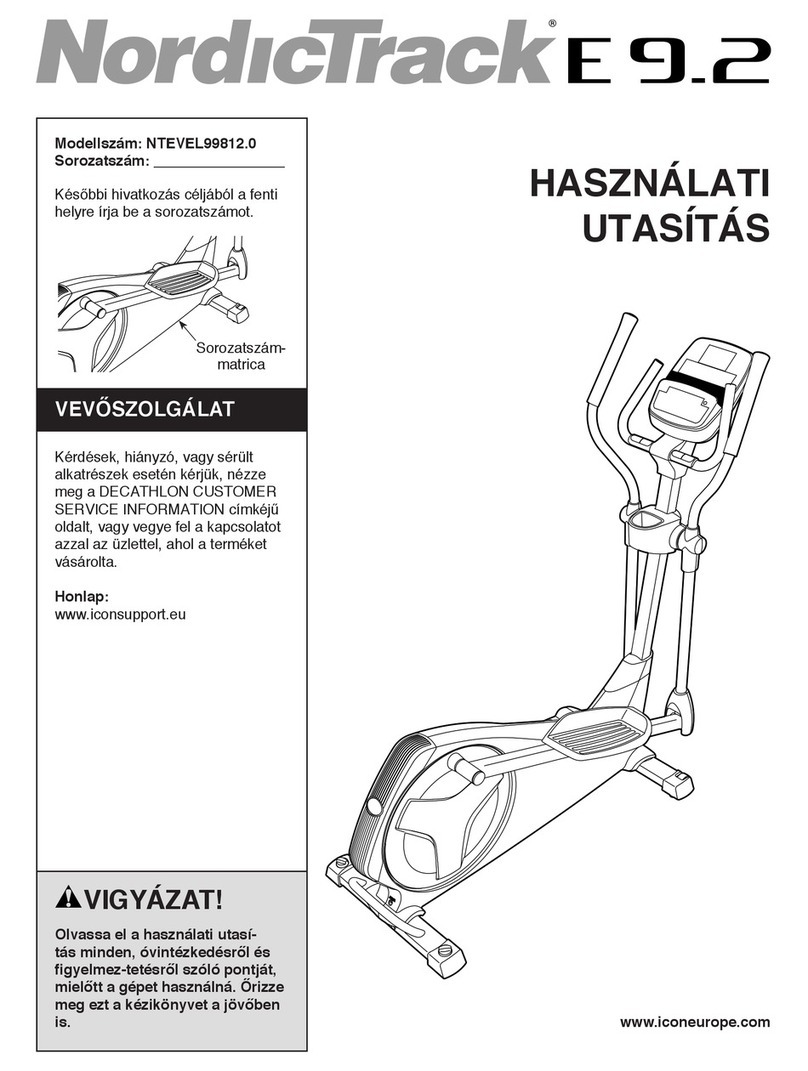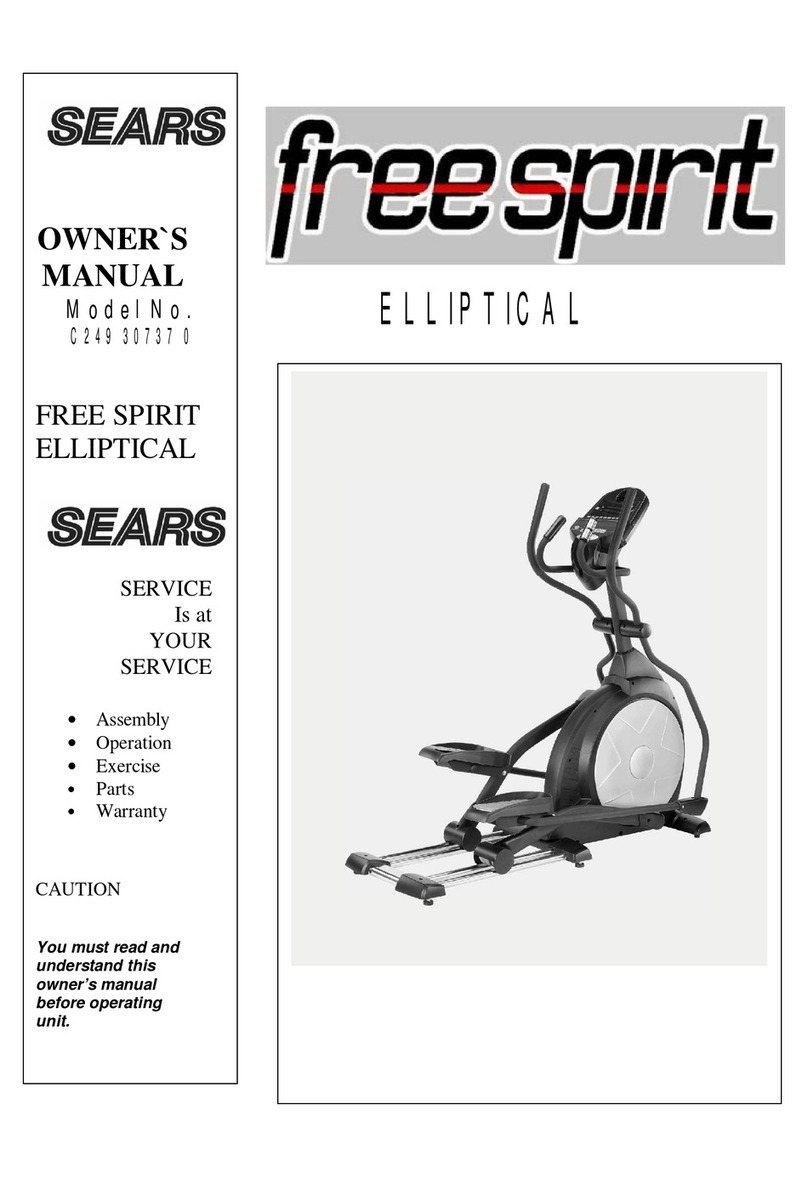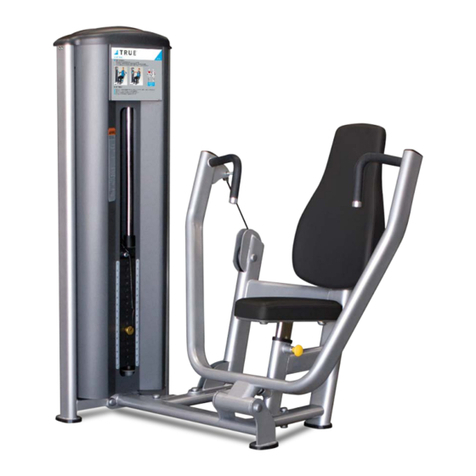
3
1. Read all instructions in this manual and all
warnings on the elliptical exerciser before
using the elliptical exerciser.
2. t is the responsibility of the owner to ensure
that all users of the elliptical exerciser are
adequately informed of all precautions.
3. Use the elliptical exerciser only as described
in this manual.
4. The elliptical exerciser is intended for home
use only. Do not use the elliptical exerciser in
a commercial, rental, or institutional setting.
5. Keep the elliptical exerciser indoors, away
from moisture and dust. Place the elliptical
exerciser on a level surface, with a mat be-
neath it to protect the floor or carpet. Make
sure that there is enough clearance around
the elliptical exerciser to mount, dismount,
and use it.
6. nspect and properly tighten all parts regu-
larly. Replace any worn parts immediately.
7. Keep children under age 12 and pets away
from the elliptical exerciser at all times.
8. The elliptical exerciser should not be used by
persons weighing more than 350 pounds.
9. Always hold the handlebars when mounting,
dismounting, or using the elliptical exerciser.
10. Keep your back straight when using the ellip-
tical exerciser; do not arch your back.
11. f you feel pain or dizziness while exercising,
stop immediately and begin cooling down.
12. Wear appropriate exercise clothes and ath-
letic shoes while using the elliptical exer-
ciser.
13. The pulse sensor is not a medical device.
Various factors, including the user's move-
ment, may affect the accuracy of heart rate
readings. The pulse sensor is intended only
as an exercise aid in determining heart rate
trends in general.
14. When you stop exercising, allow the pedals
to slowly come to a complete stop. The ellip-
tical exerciser does not have a free wheel;
the pedals will continue to move until the fly-
wheel stops.
15. The battery pack contains materials that are
considered hazardous to the environment.
Proper disposal of the battery is required by
federal law.
16. The decal shown below has been placed on
the elliptical exerciser. f the decal is missing
or illegible, call the toll-free telephone num-
ber on the front cover of this manual and
order a free replacement decal. Apply the
decal in the location shown.
WARN NG: Before beginning this or any exercise program, consult your physician. This
is especially important for persons over the age of 35 or persons with pre-existing health problems.
Read all instructions before using. CON assumes no responsibility for personal injury or property
damage sustained by or through the use of this product.
MPORTANT PRECAUT ONS
WARN NG: To reduce the risk of serious injury, read the following important precau-
tions before using the elliptical exerciser.
